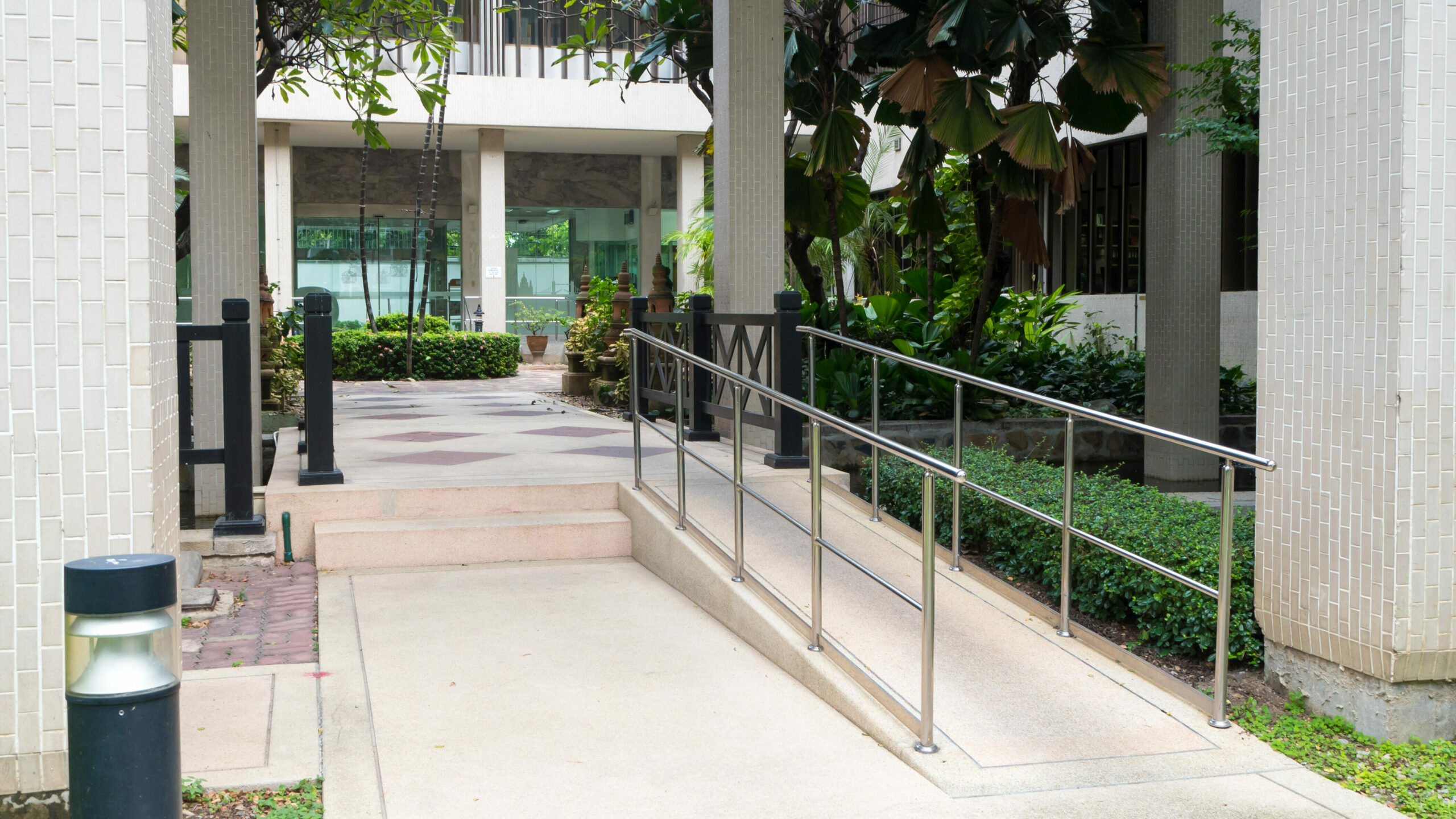
The accessibility of buildings is crucial to ensuring an inclusive approach to employment. The Americans with Disabilities Act (ADA) sets out detailed standards that buildings need to comply with to ensure that people with a range of disabilities can access and navigate them effectively. These are all outlined in the ADA Accessibility Standards that covers all facilities including parking, a building’s entrances and fire exits, elevator and stair access, hallways and washrooms.
Such access should be provided for an employee’s main place of work. For visits to other locations owned by your organization where no such access (temporary or permanent) is achievable then an alternative venue (such as a hotel for team meetings) could be used as this would constitute a reasonable accommodation. In the long term, however, accessibility solutions for regularly frequented locations will need to be found.
It also outlines what is reasonable for a company or organization to implement to accommodate visitors and employees in terms of historical buildings.
Wherever possible, main entrances to buildings should be fully accessible, however due to the age of some buildings, access via the principal entrance may not always be feasible. In this case an alternative entrance which is, or can be made, accessible should be clearly sign posted.
You may also want to consider additional accommodations to assist those with impairments, such as an induction (or hearing) loop in the main lobby and meeting rooms (with appropriate signage) and hi-visibility hazard strips at the top of a flight of stairs.